This article was co-authored by wikiHow staff writer, Hannah Madden. Hannah Madden is a writer, editor, and artist currently living in Portland, Oregon. In 2018, she graduated from Portland State University with a B.S. in Environmental Studies. Hannah enjoys writing articles about conservation, sustainability, and eco-friendly products. When she isn’t writing, you can find Hannah working on hand embroidery projects and listening to music.
There are 12 references cited in this article, which can be found at the bottom of the page.
This article has been viewed 106,976 times.
Learn more...
Have you ever wondered how herbal shampoos are made? Read on to make your own! This traditional Indian recipe reduces hair fall, removes lice, acts as an anti-dandruff shampoo, conditions your hair and helps grow your hair long and strong.
Ingredients
- 25 g (1/3 cup) of soap nuts
- 25 g (1/3 cup) of dried gooseberry
- 25 g (1/3 cup) of dried shikakai
- 1/2 cup (64 g) of aloe vera
- 1/2 cup (64 g) of hibiscus leaves
- 1/2 cup (64 g) of tulsi leaves
Makes 12 fluid ounces (0.35 L) of shampoo
Steps
Combining the Ingredients
-
1Soak soap nuts, dried gooseberry, and dried shikakai for 12 hours. Fill a large pot with water and then pour 25 g (1/3 cup) of soap nuts, 25 g (1/3 cup) of dried gooseberry, and 25 g (1/3 cup) of dried shikakai into the water. Let the ingredients soak overnight, or for about 12 hours, so they get soft.[1]
- Soap nuts provide a small lather to your shampoo so it’s easier to wash your hair with.
- Gooseberry helps to promote blood flow to the scalp and new hair growth.
- shikakai has antibacterial and antifungal properties to help prevent dandruff.
- Your ingredients will be much easier to use after they’ve soaked since they won’t be hard and dry anymore.
- You can also substitute the shikakai for 2 tbsp (28 g) of Fenugreek seeds.[2]
-
2Boil your mixture over medium heat. Keeping your ingredients in the same pot, put them on the stove and turn it to medium heat. Wait until you see large bubbles rise to the top of the water to tell that it’s boiling.[3]
- The water may turn muddy and brown as you boil it.
Advertisement -
3Scoop out the soap nuts and remove the seeds. Use a spoon to scoop out the soap nuts from the pot. With your fingers, gently peel open the outside of the soap nuts to reveal the soft center. Throw away the outside shell and put the inside of the nut back into your mixture.[4]
- Opening up the soap nuts will help them blend better into your shampoo.
-
4Boil a pot of aloe vera, hibiscus leaves, and tulsi leaves. Add 3 cups (710 mL) of water to a different pot, then put in 1/2 cup (64 g) of aloe vera, 1/2 cup (64 g) of hibiscus leaves, and 1/2 cup (64 g) of tulsi leaves. Turn the stovetop onto medium heat and wait until you see large bubbles rising to the top of the water.[5]
- You don’t have to be exact with your measurements here, since the herbal mixture will benefit your hair no matter what ratio it’s at.
- Hibiscus helps to promote hair growth, tulsi leaves help to reduce itching and dandruff, and aloe vera has a lot of moisture to keep your hair smooth and shiny.
-
5Combine both pots, then blend the mixture. Carefully pour both of your pots of liquid into a blender, then pulse the blender 4 to 5 times. Try to blend your shampoo into a pulp, but not a smooth juice.[6]
- You can also use a handheld blender and blend your ingredients in the pot on the stove, if you have one.
-
6Strain the liquid into a glass jar. Hold a fine mesh strainer over a glass jar and pour your blended mixture through it. Once liquid stops running out from the pulp in the strainer, you can throw the pulp away.[7]
- Make sure your jar can hold at least 12 fluid ounces (0.35 L).
- Don’t push the pulp through the strainer, or you could end up with a chunky shampoo.
Tip: Try saving glass juice or soda bottles to store your shampoo in.
-
7Store your shampoo in the jar with a lid on it. Make sure the lid on your bottle is airtight to keep the ingredients fresh and smelling good. You can keep your shampoo in your shower to use it every time you wash your hair for a natural alternative to shampoo![8]
- Try to use your herbal shampoo within 3 months for the best results.
Using Herbal Shampoo
-
1Shake the bottle every time you use your shampoo. Some separation of your ingredients is natural. Make sure the lid is on tight and shake your bottle for about 10 seconds before you use it in your hair.[9]
-
2Pour a quarter-sized amount of shampoo into your palm. You don’t need a ton of herbal shampoo to get your hair clean. Try starting out with less than you think you need, then adding more. Pour some shampoo into your palms and rub it around briefly to get a slight lather.[10]
- Herbal shampoos won’t lather up as much as synthetic shampoos do since they don’t have lathering chemicals in them.
-
3Rub the shampoo into your hair, then rinse it out. Focus on your scalp as you apply the shampoo all over your head. Once you’ve covered your scalp completely, rinse the shampoo out with lukewarm water until you can’t feel it on your hair anymore.[11]
- The shampoo from your scalp will run down to the ends of your hair as you rinse so that all of your hair gets clean.
-
4Rinse your hair with apple cider vinegar. When you first start using herbal shampoos, your hair may feel oily or weighed down after you wash it. If you need to, wash your hair a second time with apple cider vinegar to remove all of the oil from your hair and leave it feeling clean. Rinse your hair with lukewarm water to get all of the vinegar out.[12]
Tip: Try keeping a small squirt bottle of apple cider vinegar in your shower in case you need it.
Things You’ll Need
Combining the Ingredients
- 2 saucepots
- Blender
- Strainer
- 12 fluid ounces (0.35 L) glass jar with lid
References
- ↑ https://www.youtube.com/watch?v=UBNI3-HWjw8&feature=youtu.be&t=221
- ↑ https://www.youtube.com/watch?v=Ot74D1x8czU&feature=youtu.be&t=150
- ↑ https://www.youtube.com/watch?v=Ot74D1x8czU&feature=youtu.be&t=220
- ↑ https://www.youtube.com/watch?v=UBNI3-HWjw8&feature=youtu.be&t=310
- ↑ https://www.youtube.com/watch?v=UBNI3-HWjw8&feature=youtu.be&t=322
- ↑ https://www.youtube.com/watch?v=UBNI3-HWjw8&feature=youtu.be&t=358
- ↑ https://www.youtube.com/watch?v=UBNI3-HWjw8&feature=youtu.be&t=377
- ↑ https://www.youtube.com/watch?v=UBNI3-HWjw8&feature=youtu.be&t=415
- ↑ https://www.goodhousekeeping.com/beauty/hair/a20705785/homemade-shampoo-conditioner-recipes/


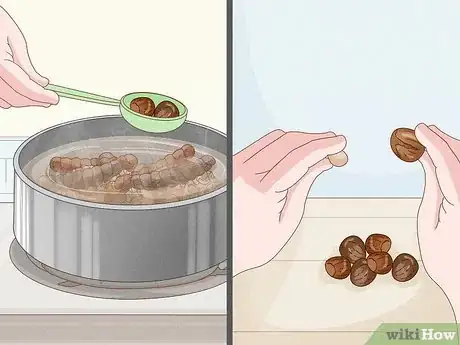

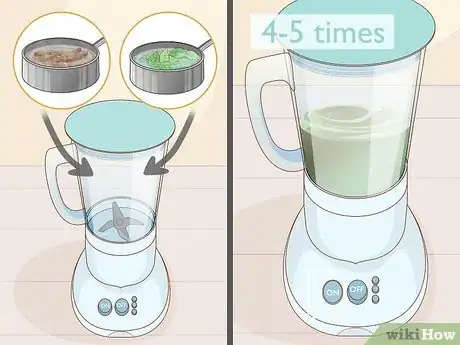
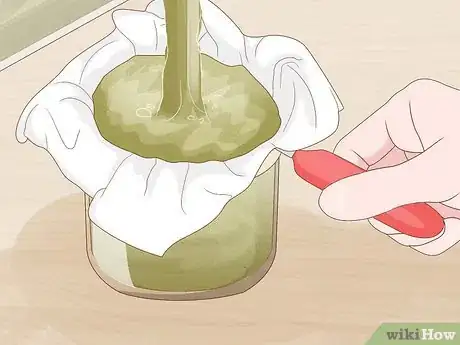

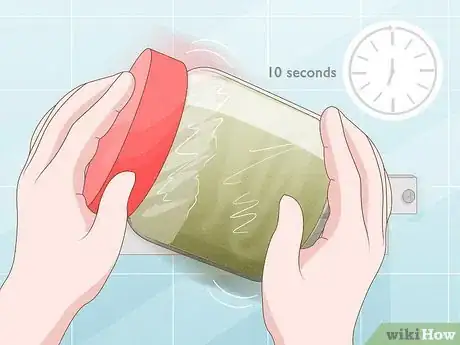
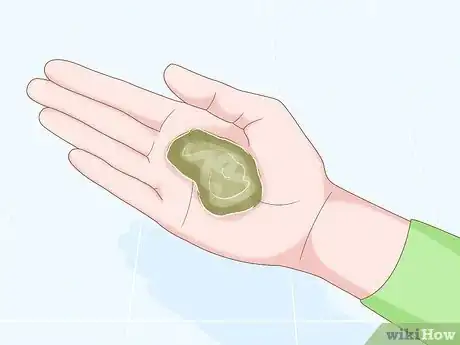
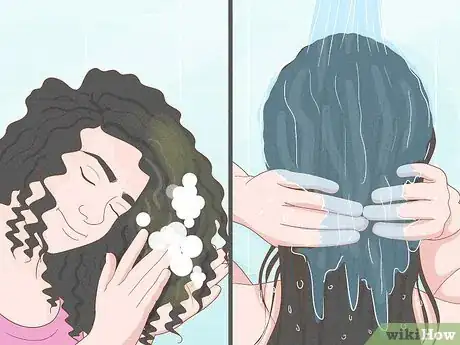




-Step-5.webp)

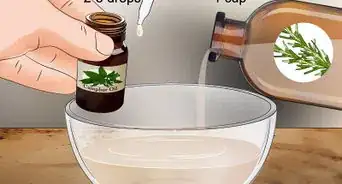












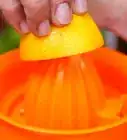
-Step-5.webp)


































